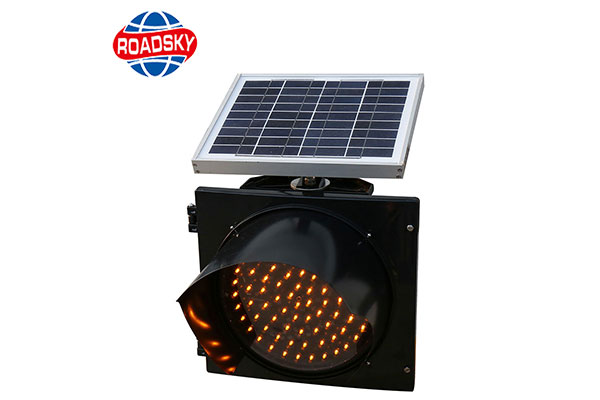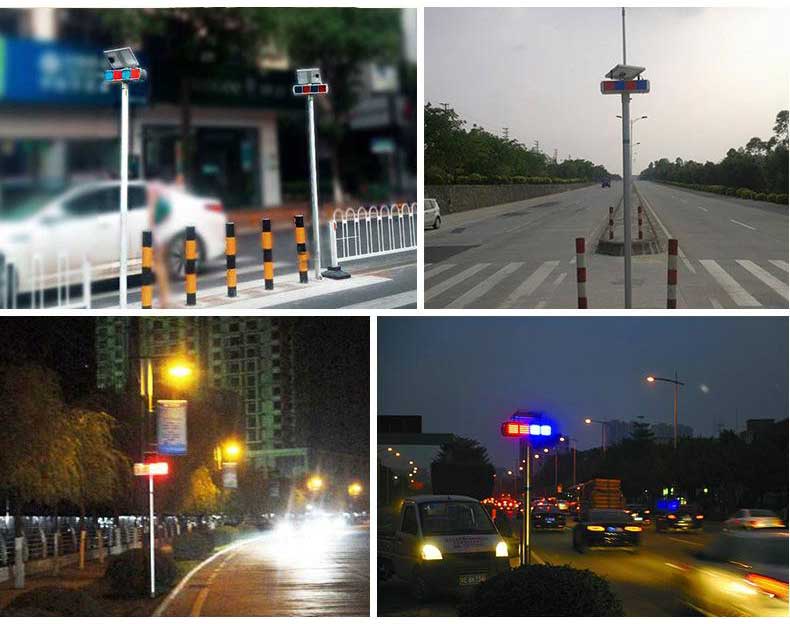What is a Solar Flashing Beacon?
In an era where sustainable technologies are gaining prominence, solar-powered solutions have emerged as frontrunners in various industries. One such innovation that combines eco-friendliness with functionality is the solar flashing beacon.

What is a Solar Flashing Beacon?
A Solar Flashing Beacon is a self-contained, solar-powered device designed to enhance visibility and draw attention to specific locations or hazards. These beacons utilize solar panels to harness sunlight and convert it into energy, which powers the flashing lights. Typically, they feature high-intensity LEDs (Light Emitting Diodes) that emit bright, attention-grabbing flashes.
Key Components and Features:
1. Solar Panels:
The heart of a solar flashing beacon lies in its solar panels. These panels are strategically positioned to capture sunlight efficiently, ensuring a continuous power supply to the beacon.
2. LED Lights:
High-intensity LED lights are used to create bright and attention-grabbing flashes. These lights are energy-efficient and have a longer lifespan compared to traditional lighting sources.
3. Battery System:
Solar flashing beacons are equipped with rechargeable batteries that store excess energy generated during daylight hours. This stored energy is utilized during periods of low or no sunlight.
4. Automatic Light Control:
Many solar beacons are equipped with automatic light control features. This means they can adjust their flashing patterns based on ambient light conditions, ensuring optimal visibility at all times.
Benefits of Solar Flashing Beacons:
- Sustainability: The use of solar power makes these beacons environmentally friendly, reducing the reliance on traditional power sources and minimizing the carbon footprint.
- Cost-Effective: While the initial investment in solar flashing beacons may be higher, the long-term savings are significant. They require minimal maintenance and eliminate ongoing electricity costs.
- Easy Installation: Solar beacons are typically easy to install since they don’t require complex wiring or a connection to the electrical grid. This makes them suitable for a wide range of applications and locations.

Applications:
1. Traffic Management:
Solar flashing beacons are widely used in traffic management systems to enhance the visibility of crosswalks, pedestrian zones, and school zones.
2. Construction Sites:
In construction zones, these beacons serve as effective warning signals, alerting drivers and pedestrians to potential hazards.
3. Emergency Situations:
Solar beacons are employed in emergency situations to mark detours, road closures, or any area requiring immediate attention.
4. Marine Navigation:
In marine environments, solar flashing beacons are utilized for buoy marking and navigation, providing a sustainable solution for enhancing maritime safety.
Conclusion:
Solar flashing beacons represent a sustainable and innovative approach to improving visibility and safety in various settings. As technology continues to advance, these beacons are likely to become even more efficient and affordable, contributing to a safer and greener future. Whether on the road, at construction sites, or in marine environments, solar flashing beacons are paving the way for a brighter and more sustainable world.

